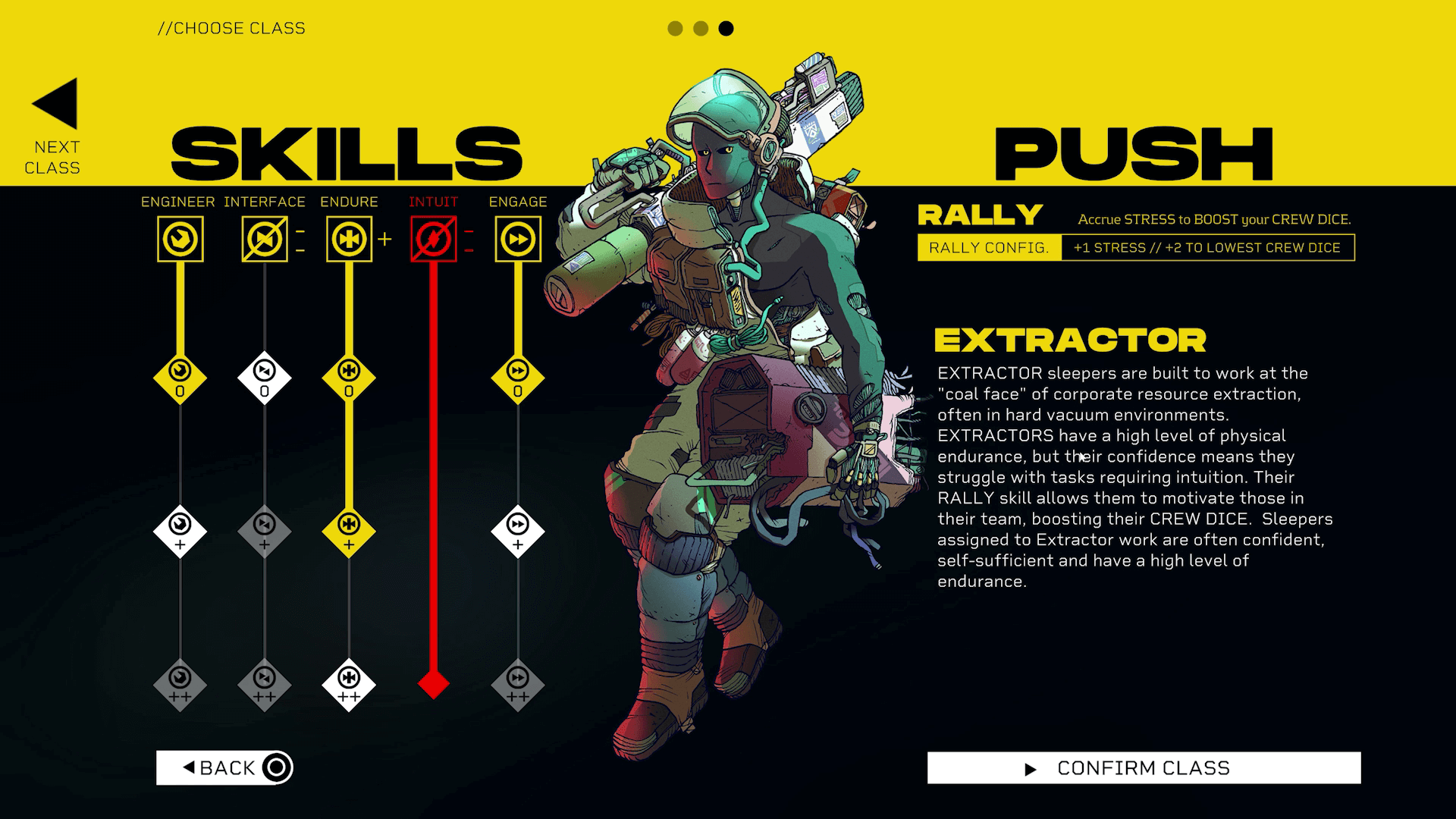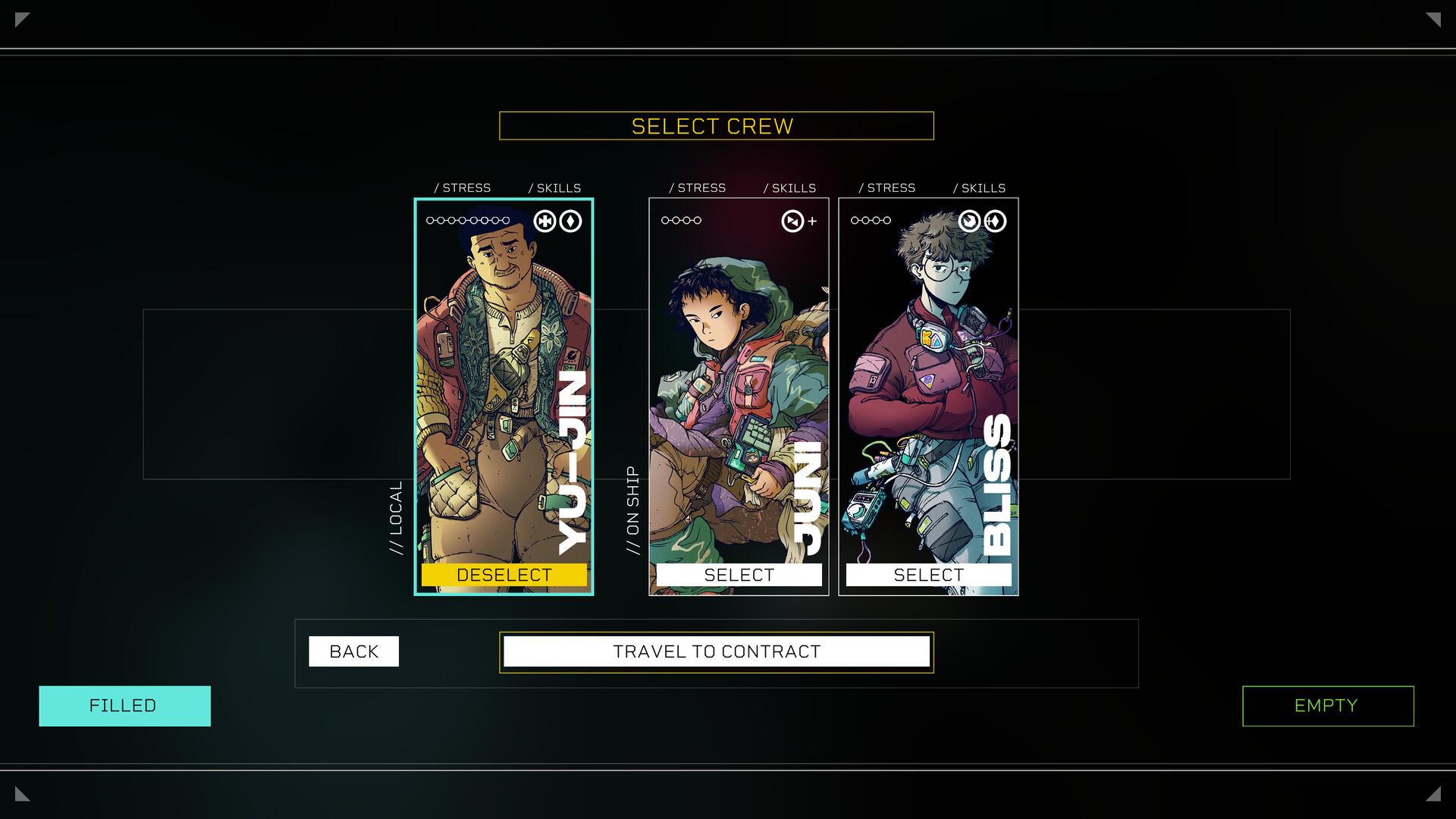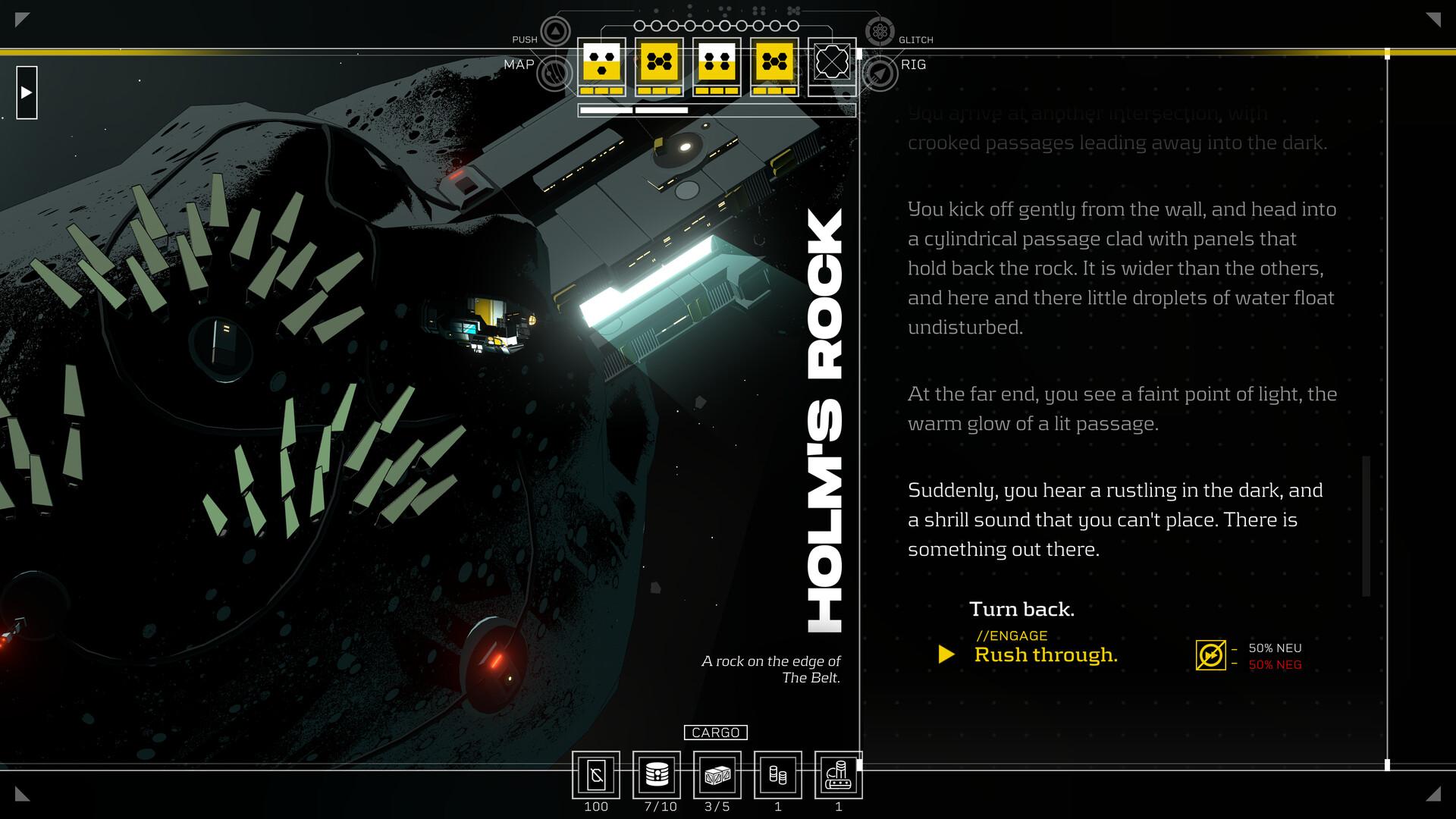
by
Lee Mehr
, posted 18 hours ago / 627 Views
Reviewer’s Note: All of my experience is based on Version 1.1 of the game.
Space: the final frontier to monetize. Between the waves of several bigger, more bombastic sci-fi games, 2022’s Citizen Sleeper was a surprising title exploring a dystopian future across the stars through a more personal lens. Well… “personal” is an odd way to describe it, given that protagonist’s situation. As a Sleeper, a Xeroxed personality inserted into a synthetic shell, there’s something different – something else – that fundamentally delineates you from humanity; after all, your entire purpose is to be a robotic corpo-slave. How rewarding, then, for that context to make Jump Over the Age’s sequel tell yet another authentically human story.
While the original is more of a tale based around gradual growth and development within one location, Starward Vector explores that through space-faring exploration. The rather blandly-named Stabiliser compound of before is no longer necessary for the new protagonist. This only became possible thanks to your new slave-master: Laine. This fusion of Triad mob boss and Miami crypto scam-coin creator has greater ambitions of power than his already-impressive gang, and losing such valued property doesn’t sit well with him. After desperately escaping his clutches with a human companion, Serafin, the two of you embark across the cosmos – hoping to avoid Laine all the while.

Even though you’re playing a different model, both Sleepers come from the same production line of three disparate classes: Operator, Machinist, and Extractor. The first stop after said escape is Hexport Space Station, which acts as a tutorial level to understand the basics of the series’ tabletop dynamics and the benefits/negatives of each class. Every day, or “cycle” as it’s termed here, allots five separate standard die; a die with one pip has a 50/50 chance between a neutral or negative outcome, while six pips is a guaranteed positive outcome. On top of that, each class has one unique stat category – like Engineer or Intuit – that’ll give your base die number an automatic +1 bonus.
This isn’t a major reboot, but it’s the type of tweak that tries to address the original’s tapering difficulty curve towards the end. There’s a unique vulnerability to whichever class you select because one category produces a permanent disadvantage to your dice and can never be redressed. It’s a shame, then, to see the consequences of this partially undercut by opportunities where there are two means of passing a skill check. If you’re locked out of one, just pool your dice rolls to the other option, start a new cycle, and repeat until you’ve filled the necessary progress bar. The system’s means of offsetting that ‘hack’ is through stress meters. Between Sleeper, each crewmate, and other significant NPCs, there’s a stronger bite when getting bad rolls now. It can also create a cascading effect where mismanagement can lock out important areas or significantly hinder your daily dice pools. Should your stress meter reach max capacity, one of your daily die could permanently be a Glitch (20% positive/80% negative outcome), which then heightens a unique tension for the rest of the campaign.

The various dynamics at play across the belt – especially with Laine acting as a Sword of Damocles over your head – are tough to juggle, but you’re not alone this time. While impactful in their own way, many of the original’s characters served as transitory stepping stones to move the plot forward; they were quest-givers with a bit of personality. Here, you and Serafin will be joined by a motley crew of archetypes (a la Cowboy Bebop or Firefly) that both join to help with your grander goal while also carrying personal quests of their own, strategically incorporating themselves into the visual novel as the plot progresses. They’re also felt mechanically, as you and two selected crew members tackle important contracts together. They serve in a more limited capacity: each crew member has their own stress meter, receives two daily die, and can only cast said die for their dedicated stat categories – which will only be one or two out of the total five. And since you’re unsure of who could be the most helpful ahead of time, there’s this palpable frustration in seeing a crewmate’s high-value die that’s effectively useless.
Like before, there’s something so strange about a text-heavy game centered on dice rolls being so engaging. Certainly, at some point, you’ll anticipate that the torpor of scanning the same space stations and doing the same tasks for more cryo (in-game currency) should soon settle in; and yet, it captures a special flow state where you’re playing the RNG, ruminating when and where to use your best and worst die for that cycle ad infinitum. Each cycle presents a slightly different opportunity for where and how you ought to spend attention in order to accrue more materials. You’re constantly being pulled in several directions: running from Laine, completing menial jobs for quick cash, exploring long-extinct corporations’ treasure troves, and more. It’s hard not to say “just one more cycle” to acquire more resources or finish off a quest.

Of course, when so much playing time is spent with half of the screen filled with reams of text and occasional RPG decisions, the game will live or die on the writing. As with the first title, the other half of this TTRPG hybrid is a choose-your-adventure book with most dialogue choices being inconsequential. That’s not a major critique since it serves the grander tale. Perhaps the best benefit of it being a structural inverse of the original is in how they complement one another. The first’s heightened sense of isolation and your transient friendships went a long way to enhance the more optimistic conclusion. Here, being a peripatetic sojourner with your ragtag crewmates echoes something more conversational, like in Mass Effect 2 – except they only converse on the game’s terms rather than yours. It lends itself to larger narrative aims.
Bigger doesn’t necessarily mean better though. Starward Vector’s structure is like a traditional step ladder: there’s the full set establishing this conflict with The Big Bad, but each step in between is like a one-hour TV episode exploring a specific theme or character. For the sake of avoiding massive spoilers, I’ll just say that one of those steps places its design and narrative aims in a clumsy union. Trying to build up a grander conflict across the cosmos with a revolutionary spirit doesn’t quite land when your means of interfacing with it is indirect dice rolls. You’re mostly irrelevant by the end of it. Being stuck in a semi-passive role with such grander consequences in the background doesn’t connect like the smaller stories here. Fortunately, the final stretch re-focuses back towards you and the crew, of the tales during a contract where shit almost hits the fan, or personal revelations. That’s where Gareth Damian Martin’s script truly shines.

Though Martin’s prose has crafted this world, Guillaume Singelin’s artwork fills it with vivid color and personality. Starward Vector’s visuals rest on three distinct pillars: the various overworlds you glide over to select nodes, the clean menu screens for skills checks, and the visual novel conjoined with detailed character renders. The locals and spaceships aren’t technically complex, what with this small team size and the game running on Unity Engine, but that utilitarian aesthetic complements the more striking visual tones of the other two pillars. Left in less-skilled hands the differences between color palettes, UI information, and more would look like a muddled mess. That clarity is also reflected through Amos Roddy’s solid composition.
Citizen Sleeper 2: Starward Vector’s true success stems from expanding upon its mechanical and narrative foundation without overriding its potent emotional connection. Granted, emphasizing greater “complexity” for a tabletop role-playing/visual novel hybrid might seem suspicious at first blush, but that would hastily disregard how those interlocking systems create such palpably tense decisions. Of course, another part of that tension is the compelling narrative that’s woven within every interaction. Even with nary a voiced line of dialogue nor a fully-animated cutscene, Jump Over the Age manages to ensorcell far easier than most big-budget studios today. With accomplishments like that? It’s easy to put up with some crossed wires and inconsistencies.
Contractor by trade and writer by hobby, Lee’s obnoxious criticisms have found a way to be featured across several gaming sites: N4G, VGChartz, Gaming Nexus, DarkStation, and TechRaptor! He started gaming in the mid-90s and has had the privilege in playing many games across a plethora of platforms. Reader warning: each click given to his articles only helps to inflate his Texas-sized ego. Proceed with caution.
This review is based on a digital copy of Citizen Sleeper 2: Starward Vector for the XS, provided by the publisher.





























